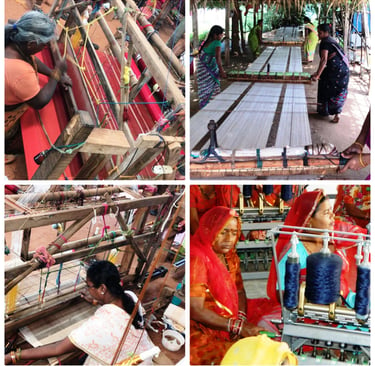Are Handloom Fabrics sustainable ?
This blog focuses on the qualities of handloom fabrics making them a part of the sustainable fashion from last many years till today and will always be


Yes, handloom fabrics are generally considered sustainable for several reasons:
Low Environmental Impact: Handloom weaving typically requires minimal energy consumption compared to mechanized processes. It doesn't rely on electricity or large-scale machinery, reducing carbon emissions and energy consumption.
Biodegradable Materials: Handloom fabrics are often made from natural fibers such as cotton, silk, wool, or linen, which are biodegradable. This means they break down naturally over time, unlike synthetic fibers that contribute to microplastic pollution.
Preservation of Traditional Techniques: Handloom weaving preserves traditional craft techniques that have been passed down through generations. By supporting these artisans, consumers help maintain cultural heritage while promoting sustainable livelihoods in rural communities.
Reduction of Chemical Usage: Handloom fabrics typically involve fewer chemicals in the production process compared to mass-produced textiles. This reduces water pollution and minimizes the environmental impact of toxic substances used in dyeing and finishing.
Support for Local Economies: Handloom weaving often takes place in small-scale workshops or home-based settings, providing employment opportunities in rural areas. By supporting local artisans, consumers contribute to sustainable economic development and poverty alleviation.
Longevity and Durability: Handloom fabrics are known for their durability and high quality. They tend to last longer than mass-produced textiles, reducing the need for frequent replacement and ultimately decreasing waste.
Overall, handloom fabrics embody principles of sustainability by promoting eco-friendly production methods, supporting traditional craftsmanship, and offering consumers a more ethical and environmentally conscious choice in fashion.
